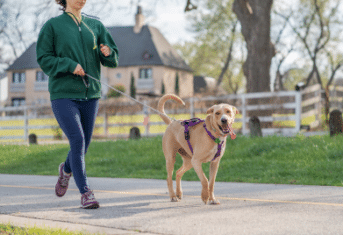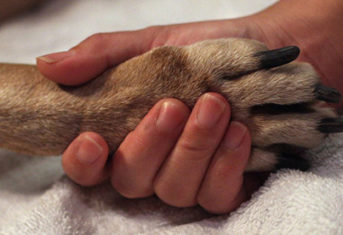How Do Dogs Sense Our Emotional State?

How Do Dogs Sense Our Emotional State?
Think your dog recognizes when you have had a bad day at the office? Does your tone of voice put your dog’s tail between his legs? Does your dog know you need a cuddle when you are sick in bed? A recent article in the Daily Mail out of the United Kingdom described how dogs can detect, using nonverbal cues, when people are dying or grieving.
Although we want to attribute great cerebral powers to our beloved canine companions, good science lies behind the observation that dogs can detect moods and illness in humans. It is not just body language, but involves multiple senses.
Sense of Smell
Dogs have a sense of smell far superior to that of humans. Compared to the size of their face, dog noses are huge and because the nostrils of dogs have a little slit on the outside, they can detect smells from the front AND the side. One the smells get into your dog’s extra-large schnoz, over 40 times more brain power is devoted to smell in dogs compared to humans, explaining why they can detect an unopened bag of bacon treats locked inside your pantry.
Using this superior sense of smell, dogs are successfully being trained to sniff out ovarian cancer in women. They can also detect low blood sugar in patients with diabetes, and alert the person to eat something, thus preventing a hypoglycemic crisis. Dogs can also predict when a patient is going to have a seizure and warn them, keeping them and others safe.
Sense of Hearing
Your dog’s ability to determine your mood is based on the tone of your voice. In a study published in Current Biology 2014 functional MRI was performed in awake dogs trained to lie down on the MRI table while wearing headphones. Researchers played different voices thorough the headphones and monitored the canine brain’s response using real time MRI images. Canine brain sensitivity to vocal emotion was similar to those found in human brains. This finding suggests either a common ancestor of both dogs and humans was responsible for both species recognition of vocal cues or that dogs evolved to recognize vocal cues in a very similar fashion to humans.
Sense of Sight
When you think of animals with good vision, birds of prey, not dogs, come to mind. Dogs’ visual acuity is one of the factors that help them recognize the difference between a happy and angry face. In another study published in Current Biology 2015, dogs were trained to touch a photo of a human face for a treat. Some dogs were trained with happy faces and others with angry faces. Not surprisingly, dogs trained with happy faces learned the skill faster because, really, who wants to associate a treat with a sourpuss. When tested with the face of a stranger, dogs could correctly differentiate between the photographs of happy and sad strangers and touch the correct face to receive a treat, indicating the ability to identify the difference between a happy and angry person.
Next time you have a bad day at the office or are feeling feverish, you can count on your best friend to know – even if you don’t speak a word.

































